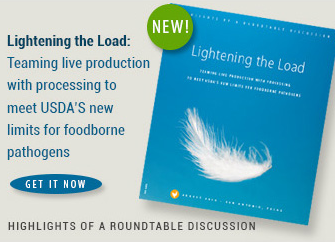You’ve got mail: Know the differences between VFD distributor, acknowledgement letters
Notification and acknowledgement letters are required by the updated veterinary feed directive (VFD) regulation effective January 1, 2017. If you’re confused about who has to send what to whom, here’s the lowdown:
Notification letter
Any feed distributors who intend to sell Type B or C medicated feed containing a VFD medication need to send a “notification letter” to FDA. They only need to send the letter once, William Flynn, DVM, MS, deputy director for science policy at FDA’s Center for Veterinary Medicine, said in an interview with VFD News Center.
Type B feeds are premixes and Type C feeds are finished feed. These are in contrast to Type A Medicated Article, which is the concentrated product used to make Type B and C feeds, he explained.
The purpose of the notification letter is simply to let FDA know who is distributing VFD feed. The letter should be sent to FDA by distributors before the first time they distribute VFD animal feed. The letter only needs to include the distributor’s complete name and business address, the signature of the distributor or the distributor’s authorized agent and the date the notification was signed.
Distributors need to notify FDA within 30 days of any change in ownership, business name or address.
The letters can be mailed to the FDA, Center for Veterinary Medicine, Division of Animal Feeds (HFV-220), 7519 Standish Place, Rockville, MD, 20855 or faxed to 240-453-6882. FDA maintains an online list of distributor notifications sorted by company name and by state.
Acknowledgement letter
An acknowledgement letter is sent by a distributor who will be receiving Type B or C feed containing a VFD medication to the originating distributor providing the feed. The originating distributor can’t distribute these types of feed to the receiving distributor until the receiving distributor sends that acknowledgement letter, Flynn said.
If the receiving distributor in turn plans to sell the feed to anyone else, they can’t do so until they have an acknowledgement letter from their receiving distributor. “It’s a bit of a daisy chain,” Flynn added.
In the acknowledgement letter, the receiving distributor states that feed won’t be shipped to an animal production facilitity without a VFD, won’t be shipped to another distributor without receiving a similar written acknowledgement letter and that distributor notification requirements have been met.
The acknowledgement letter enables VFD feed to move through distribution channels before a VFD is required, Flynn said. Distributors who are issuing VFD feed to a producer client do not need to receive an acknowledgement letter from the client — but they do need a VFD from a veterinarian.
Acknowledgement letters should be retained by the originating distributor for 2 years. And “No, you don’t have to have an acknowledgement letter for every shipment. If you have an ongoing relationship with the distributor you’re shipping to, I think you’re fine,” Flynn added.
Posted on February 15, 2017

















